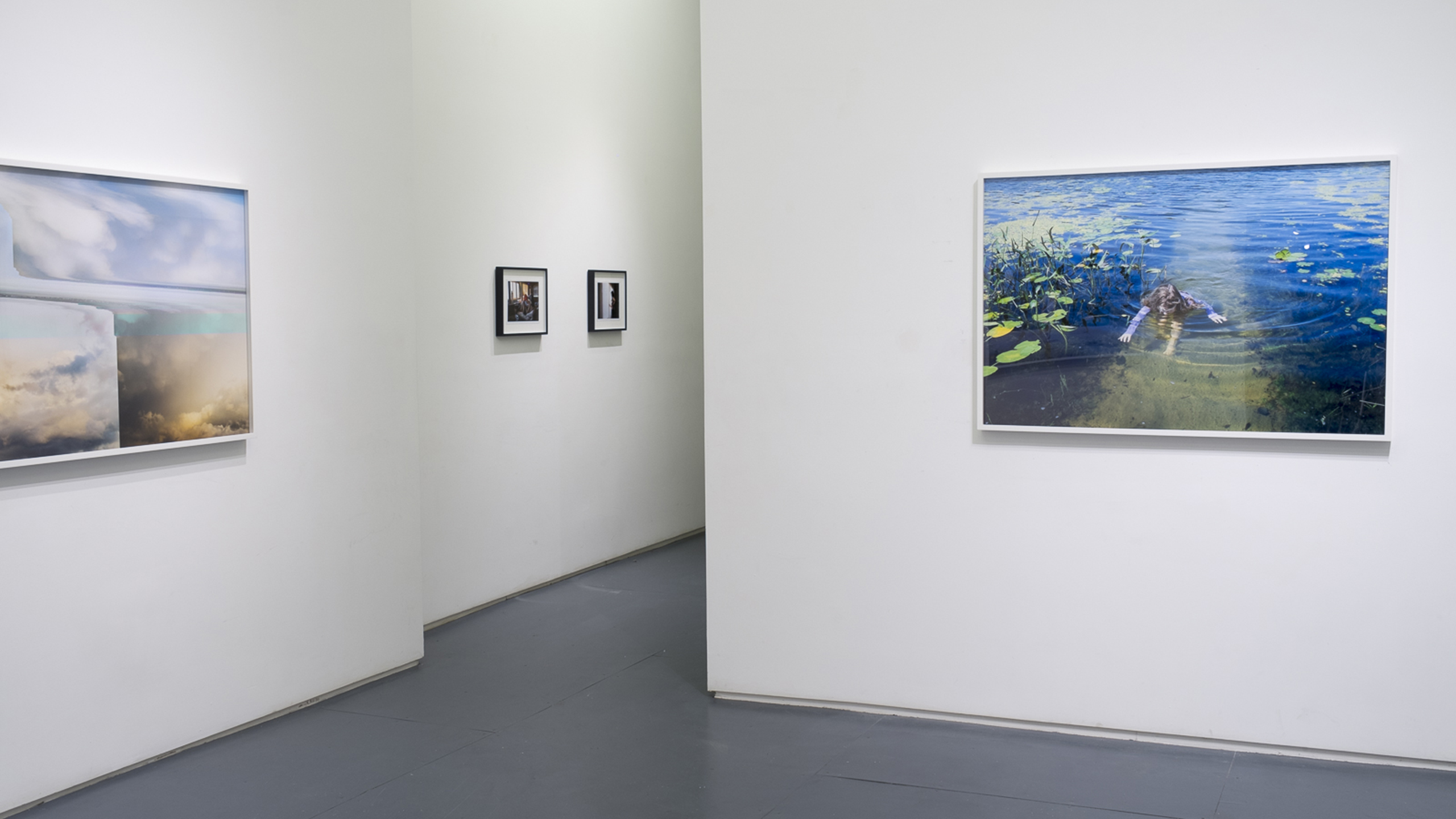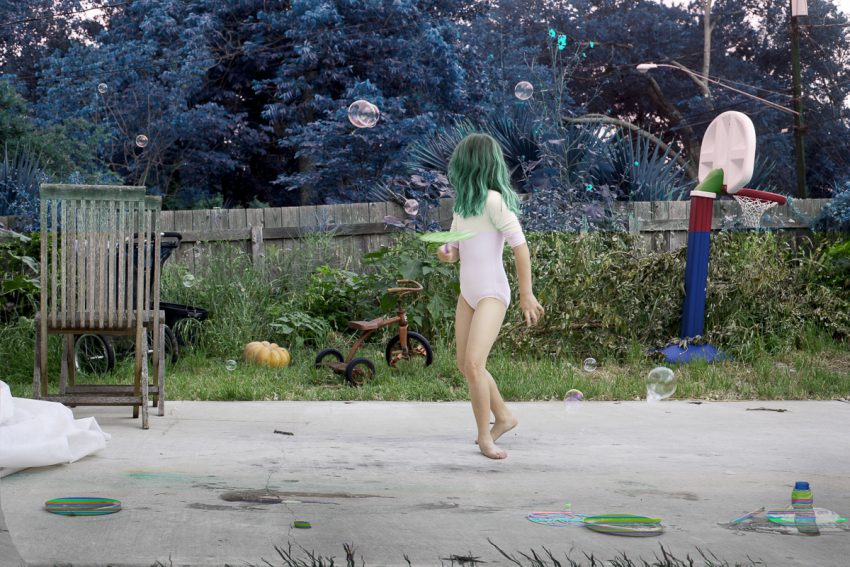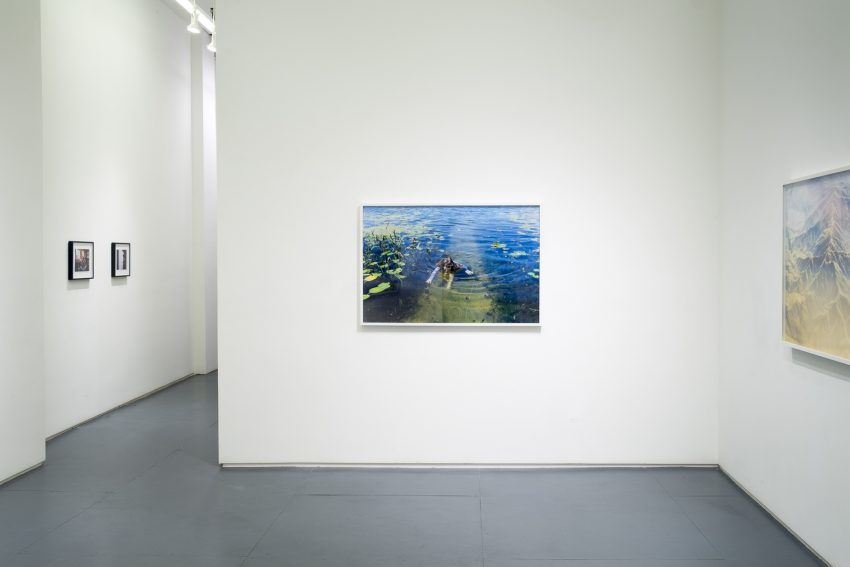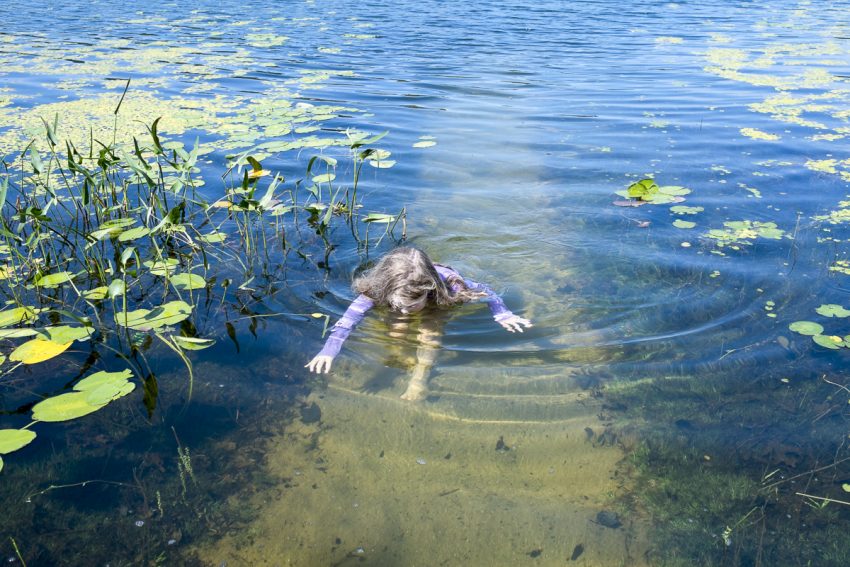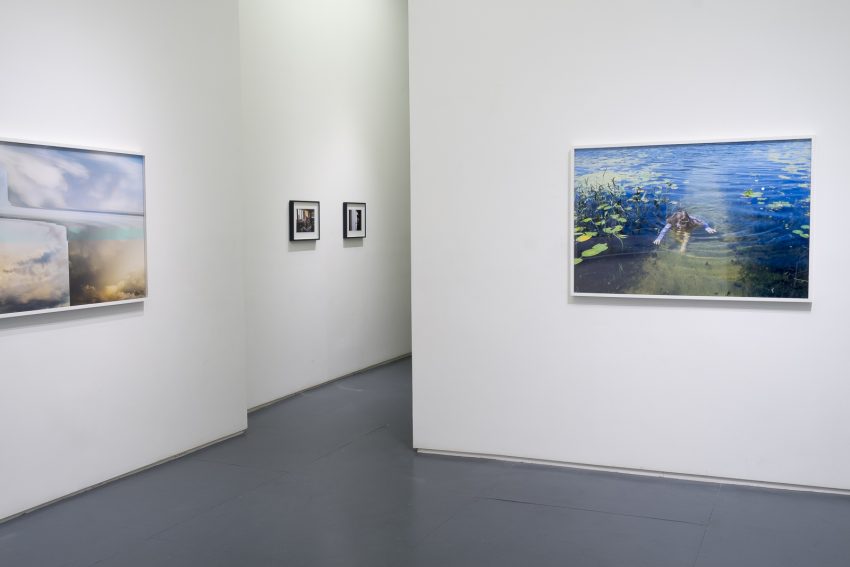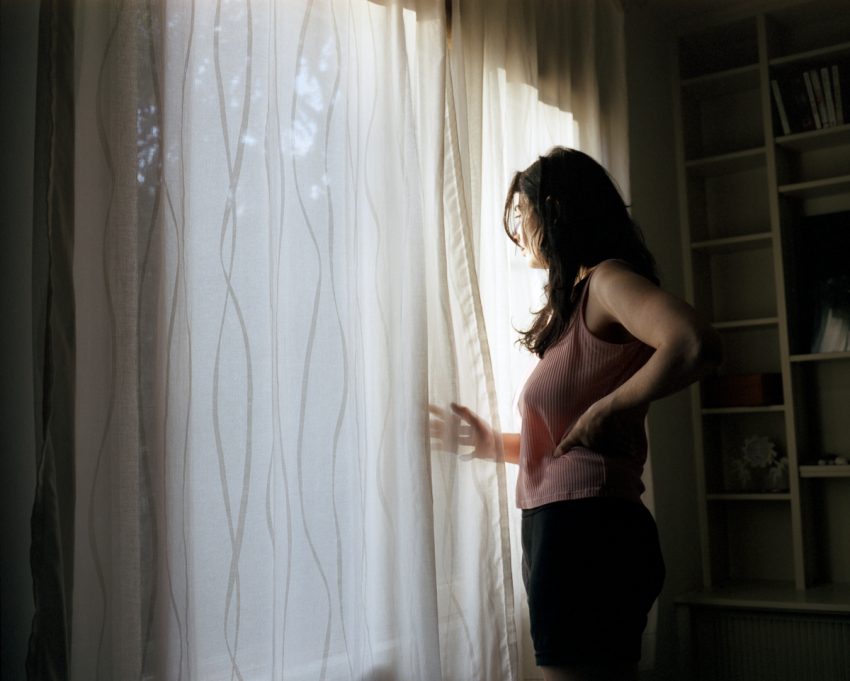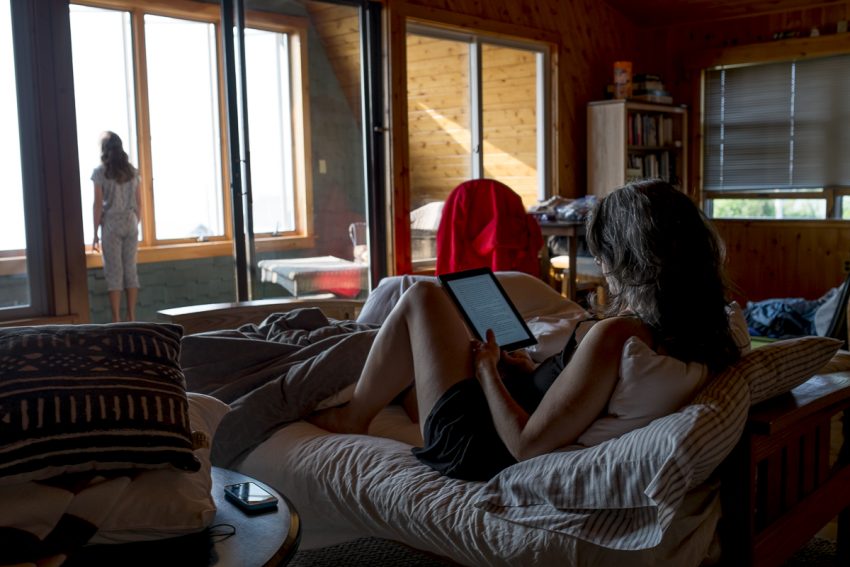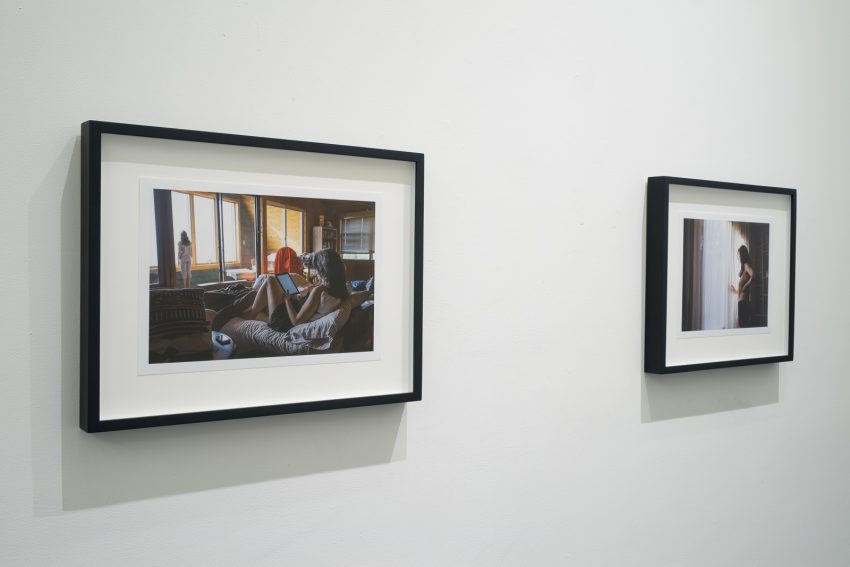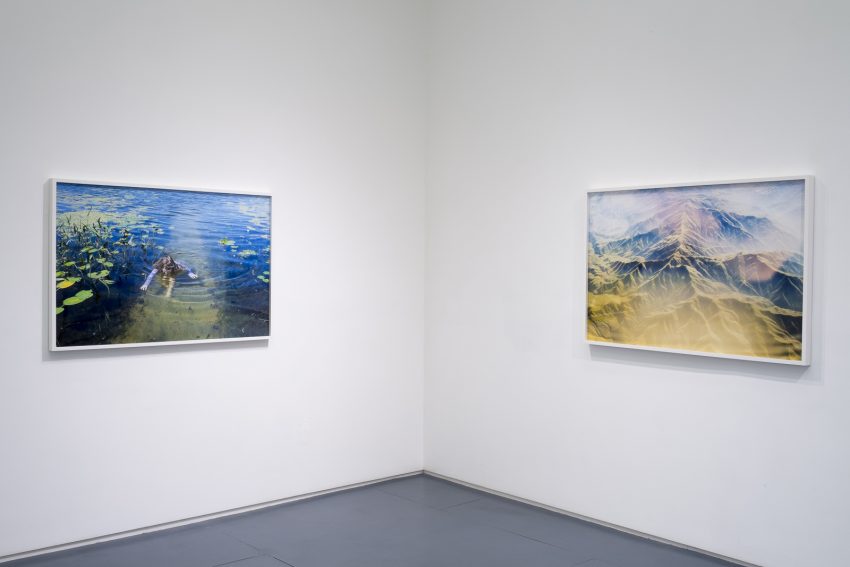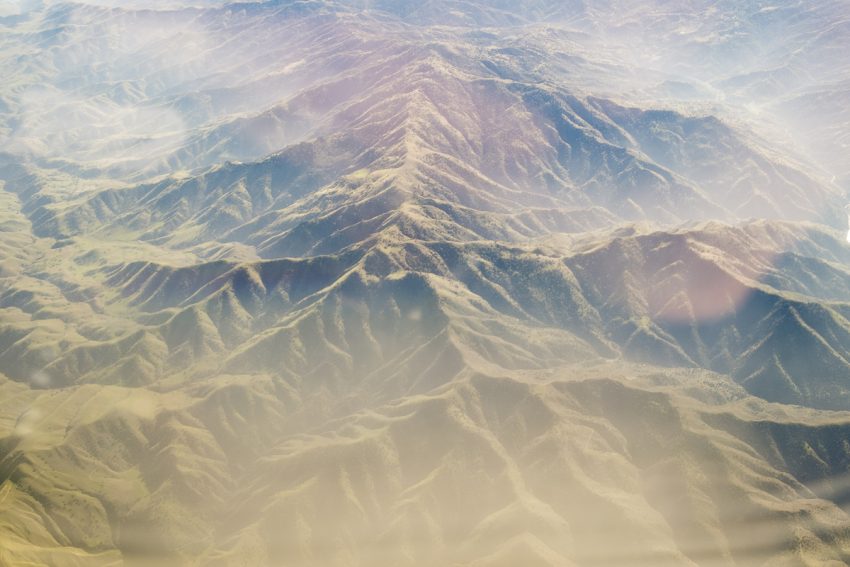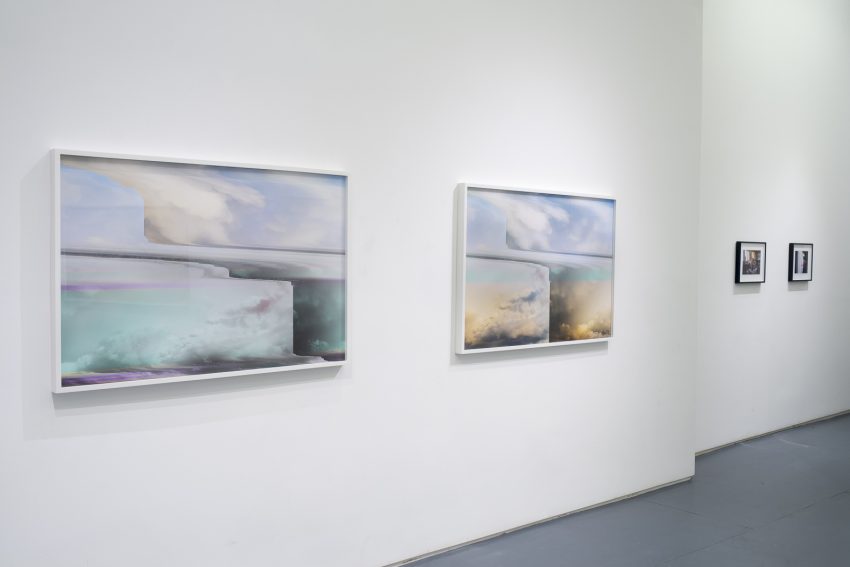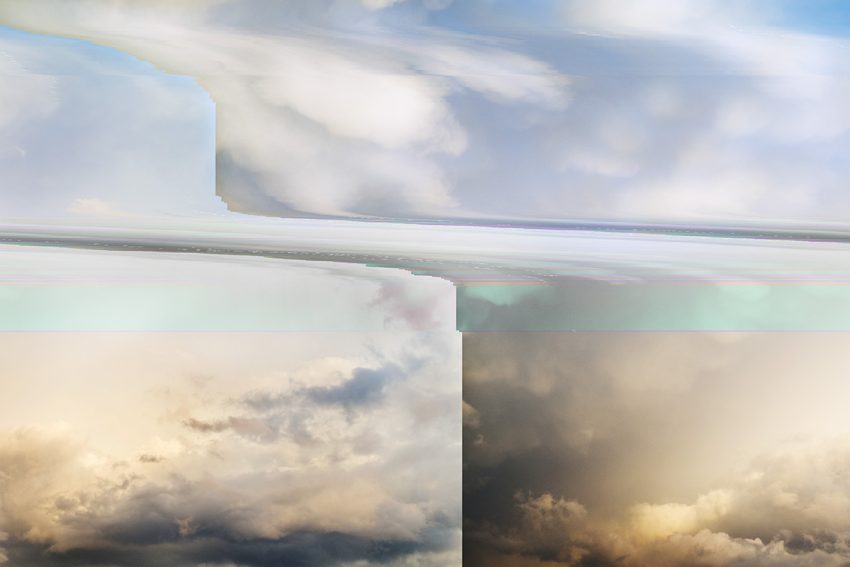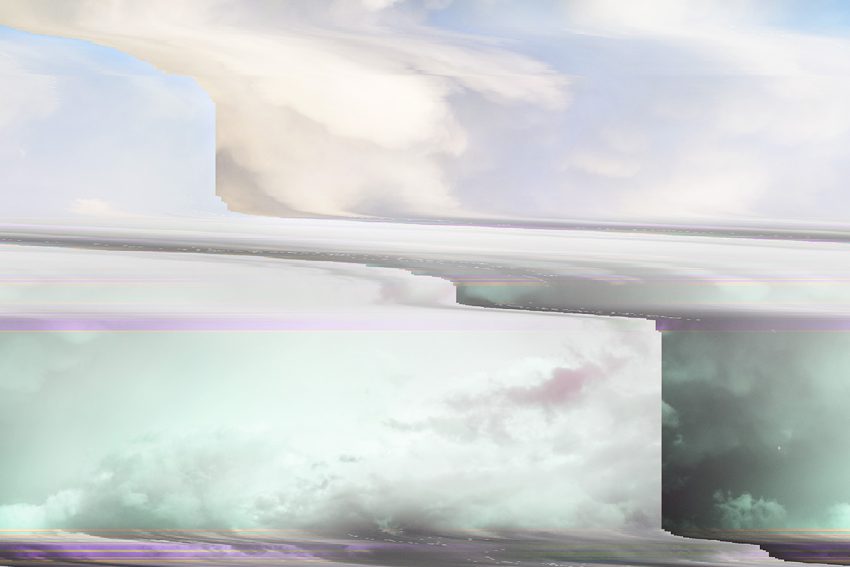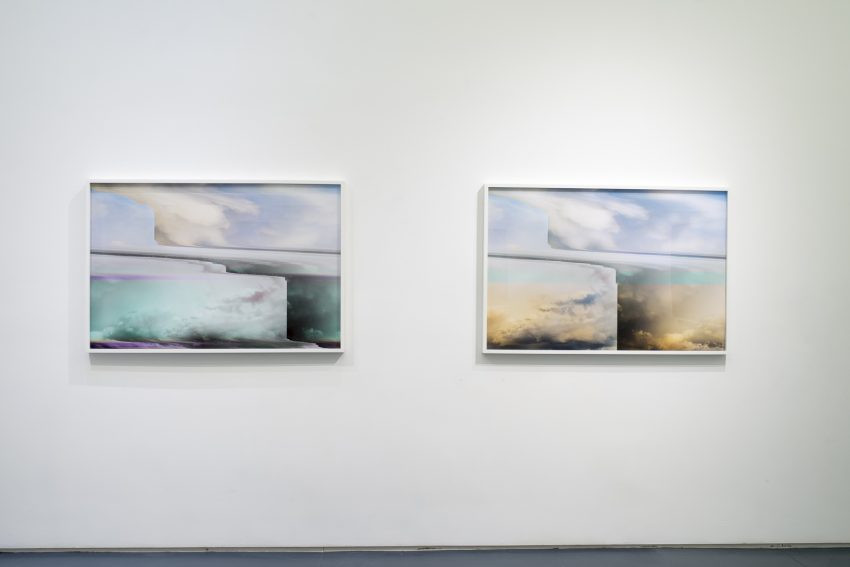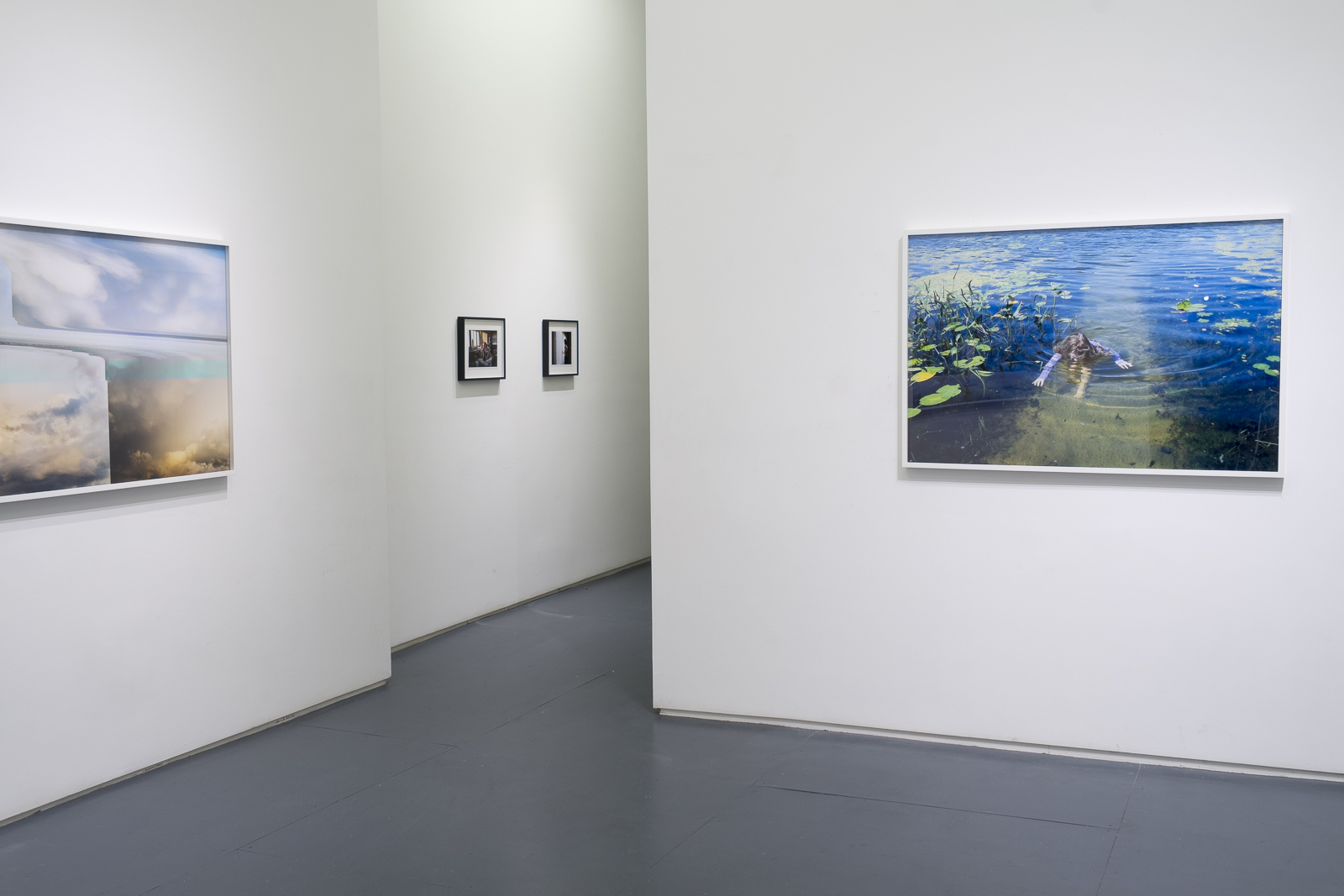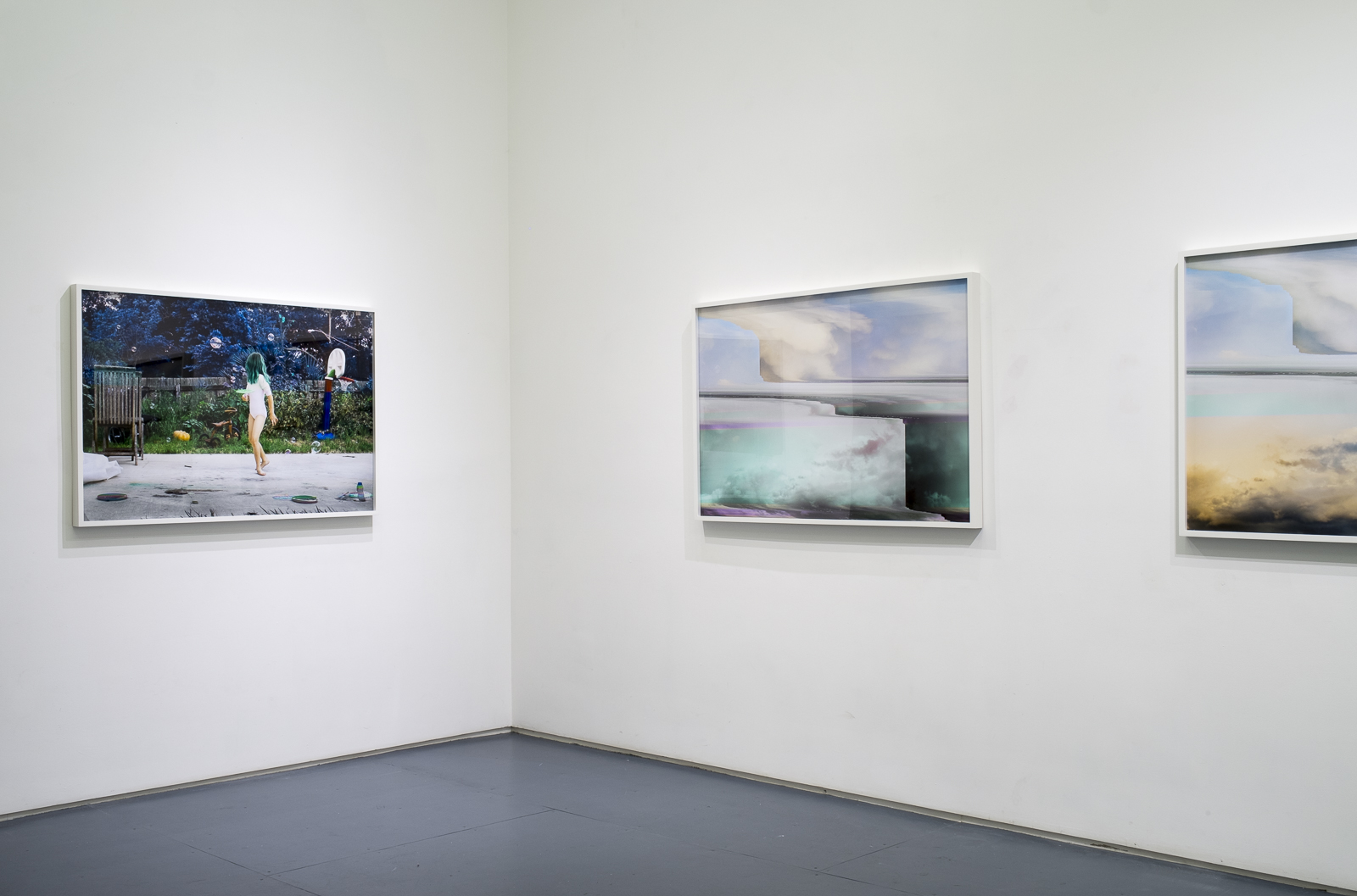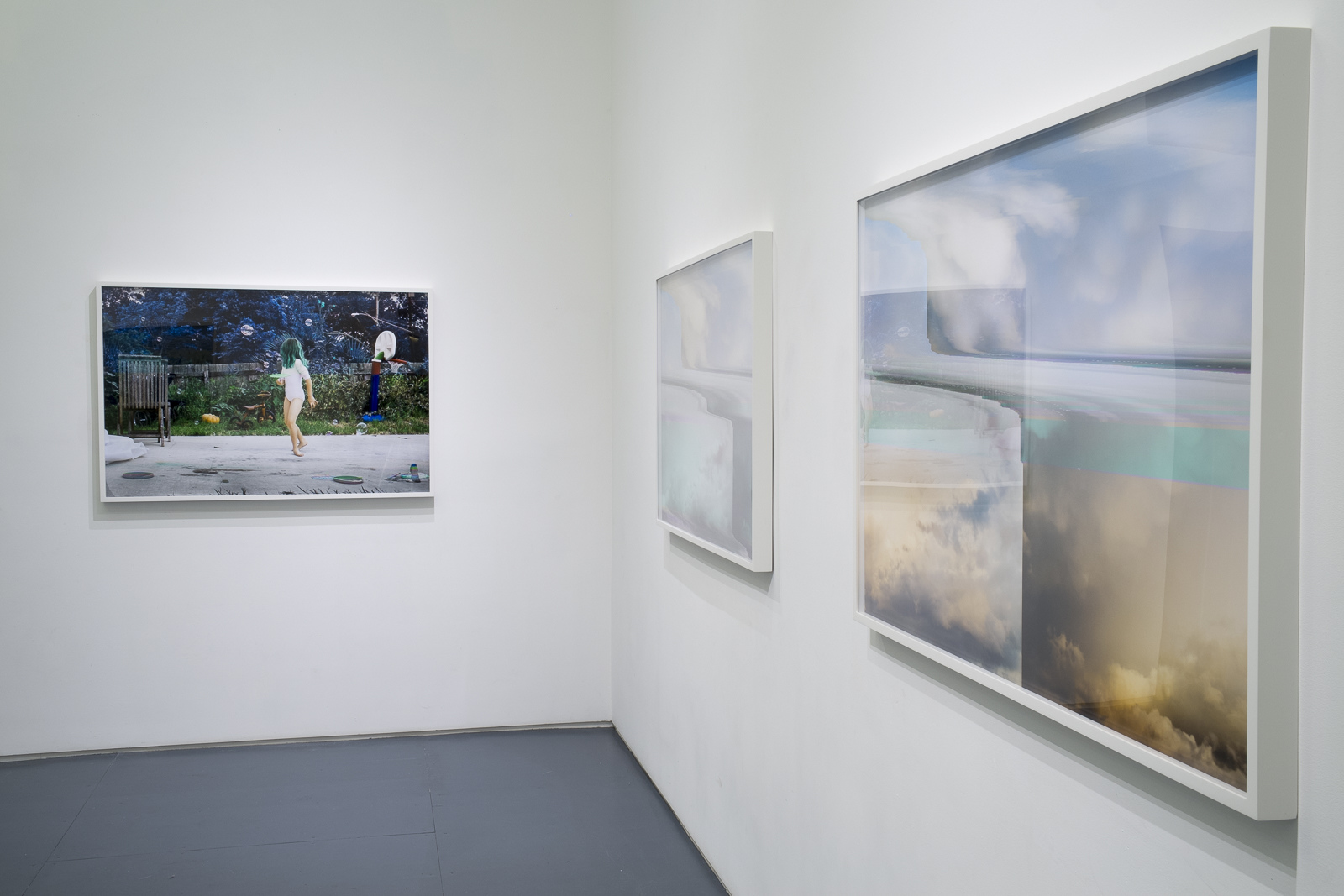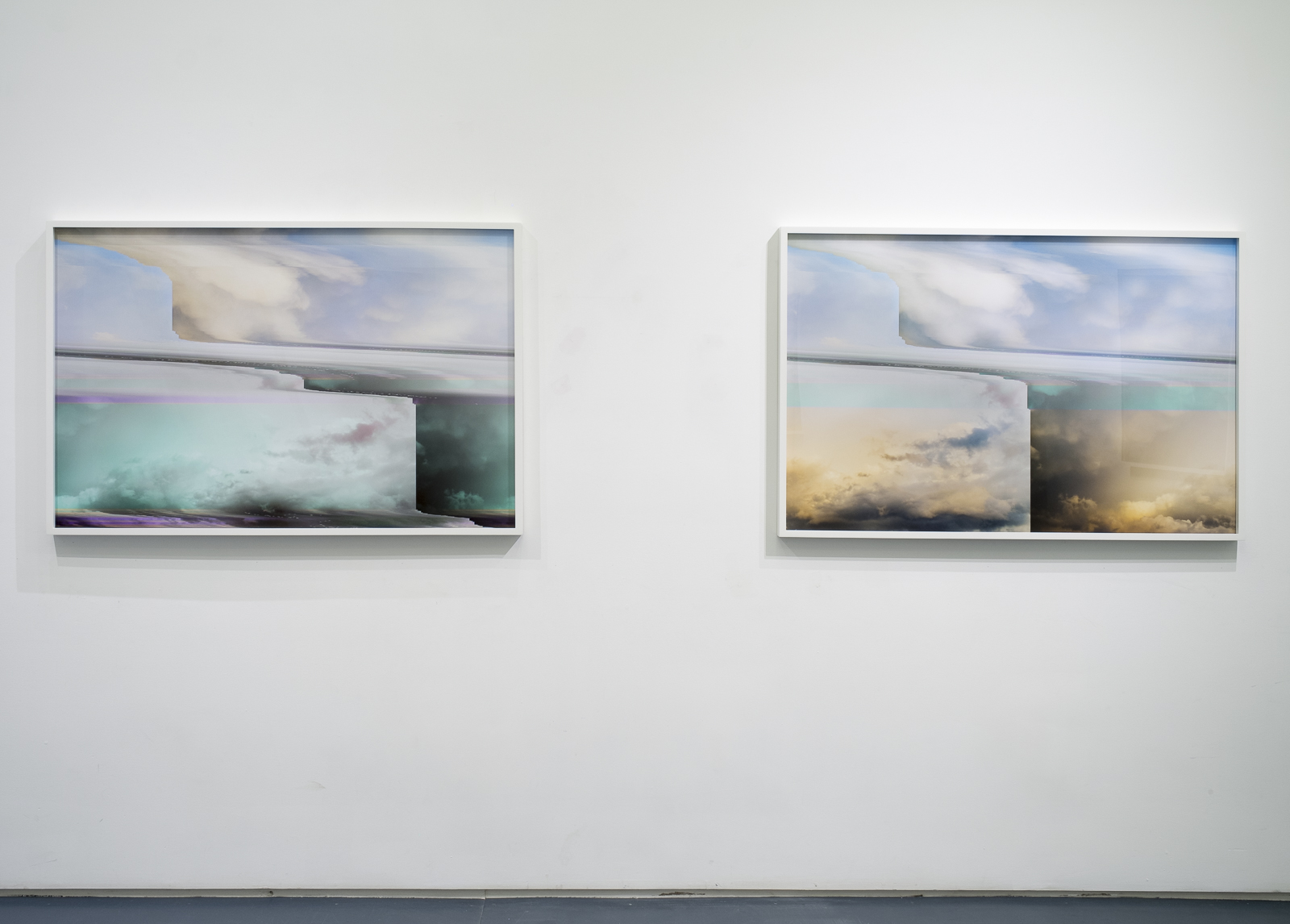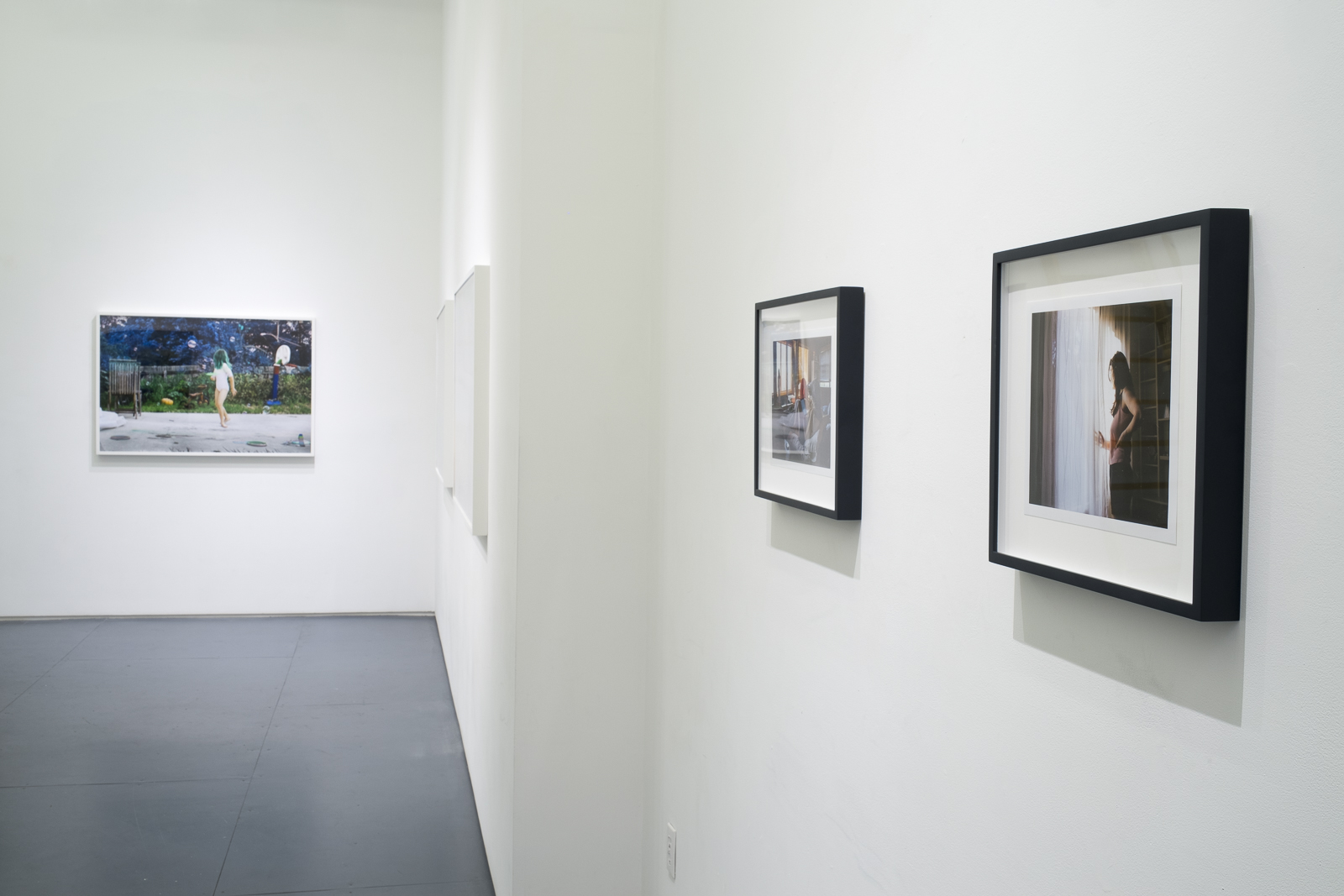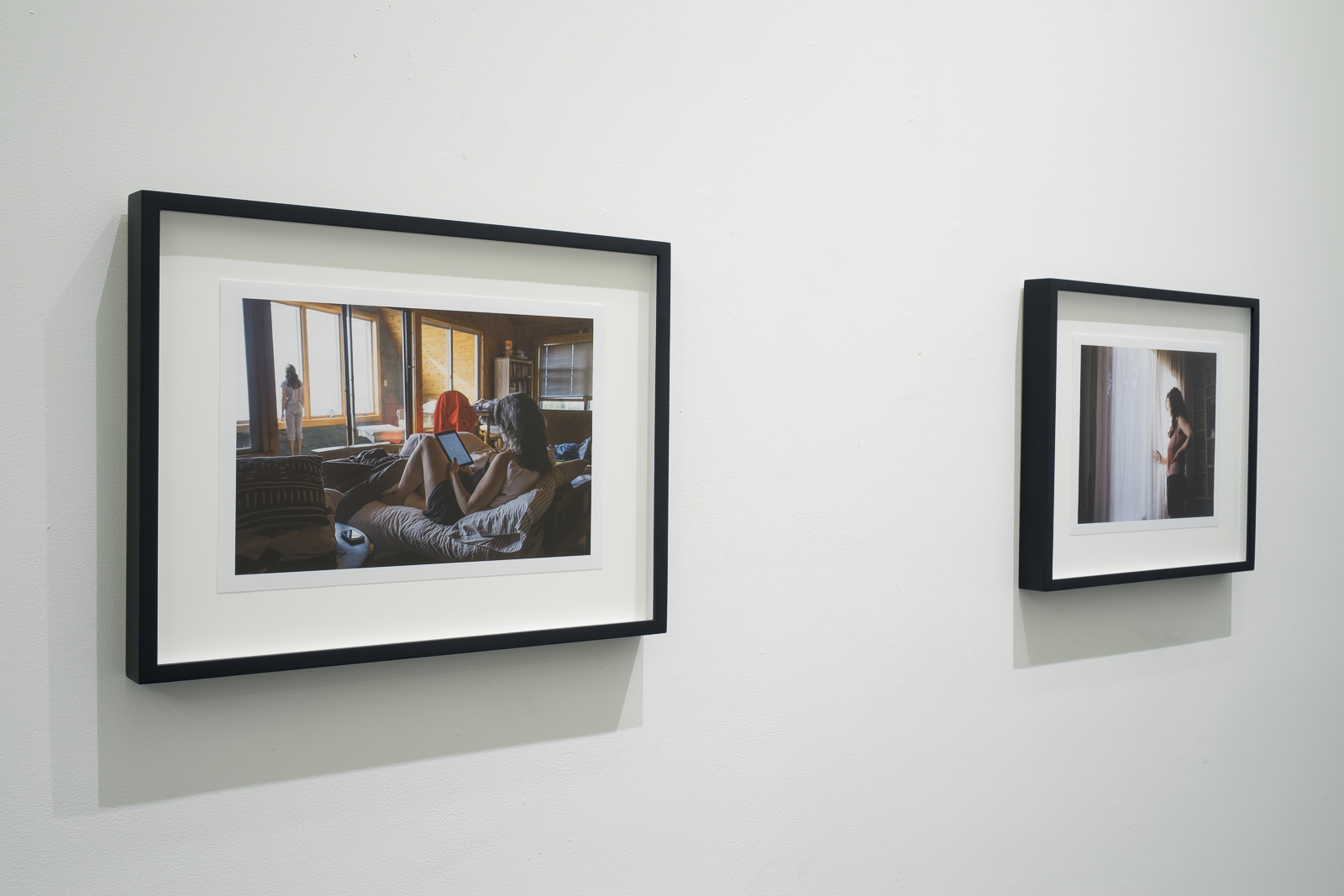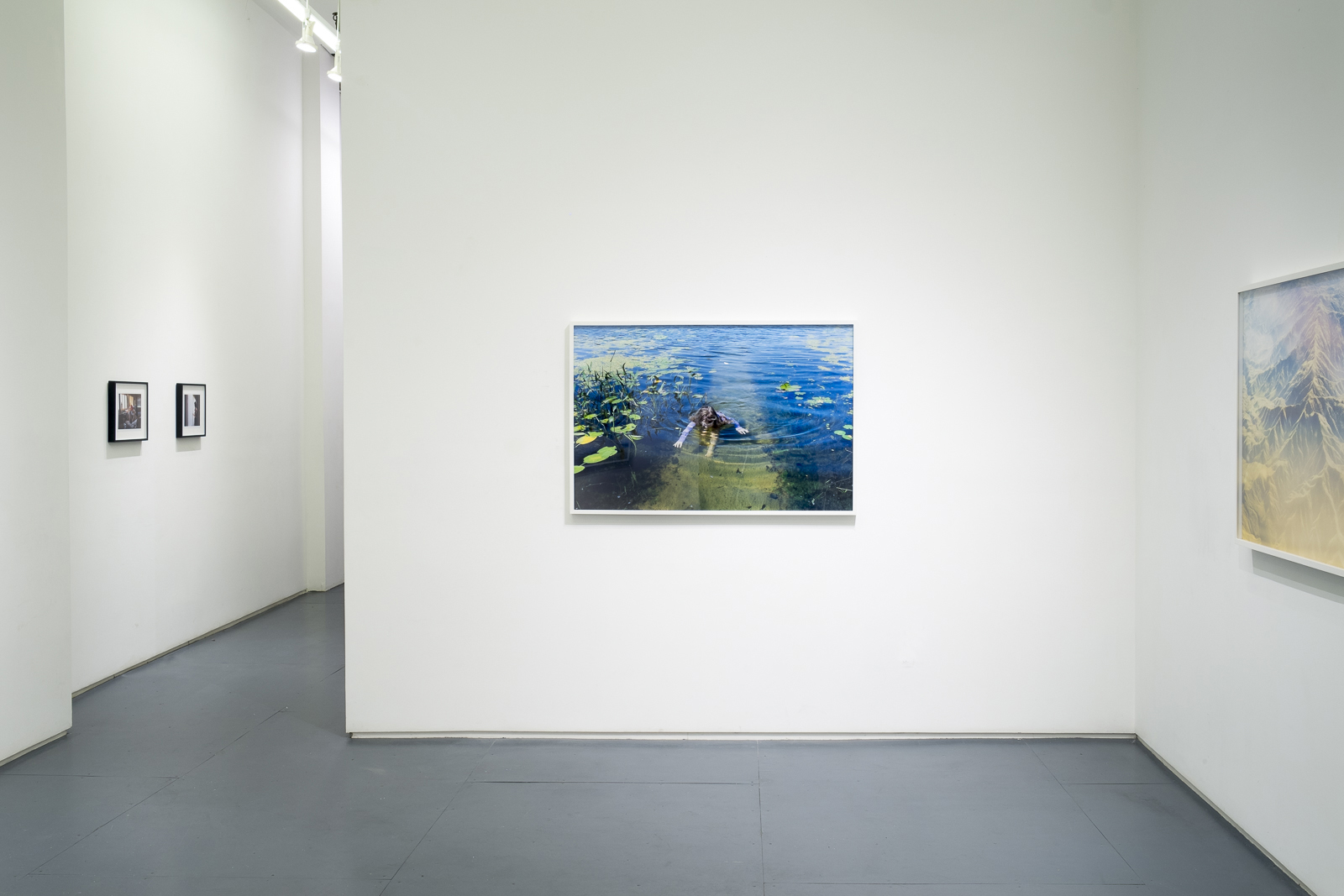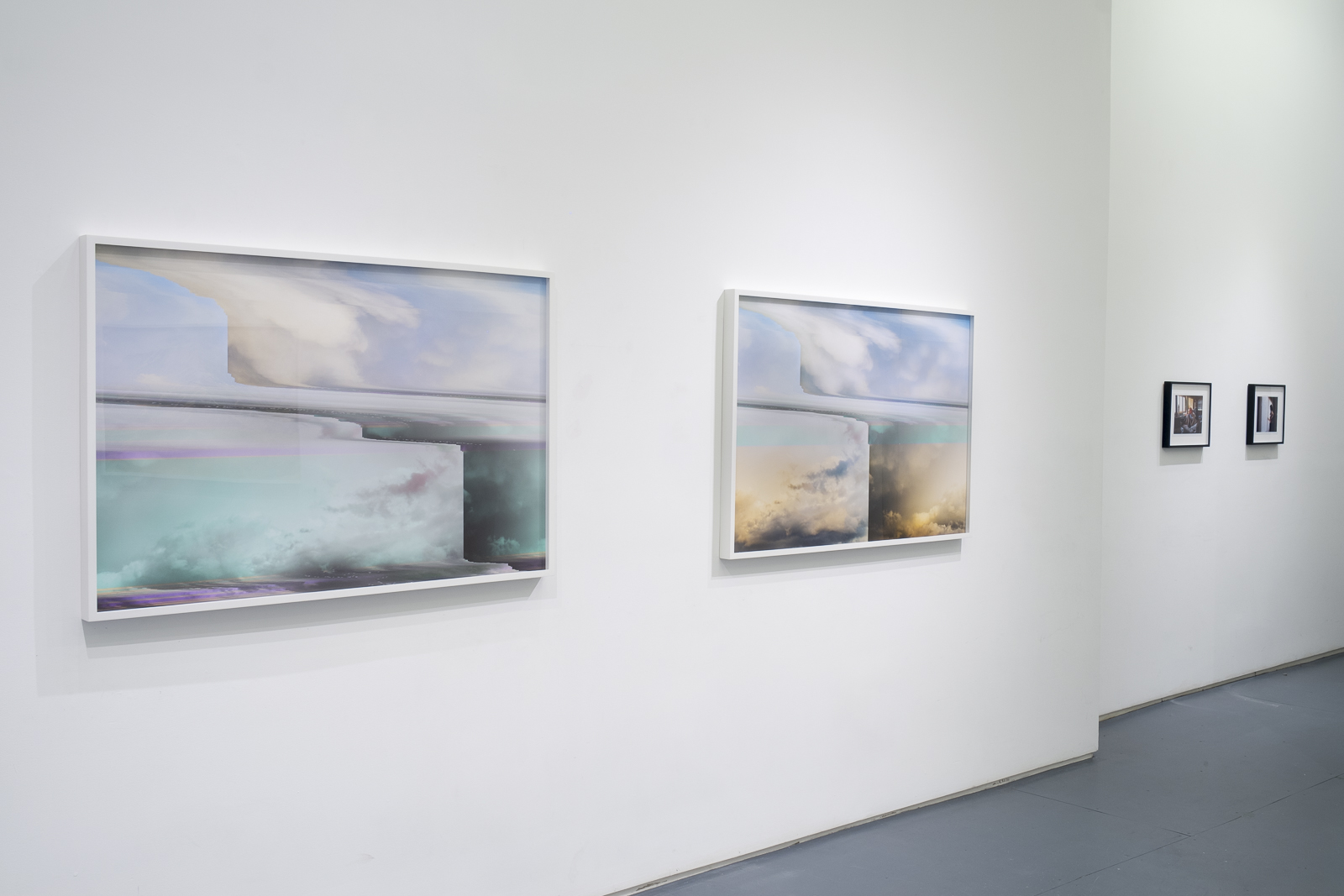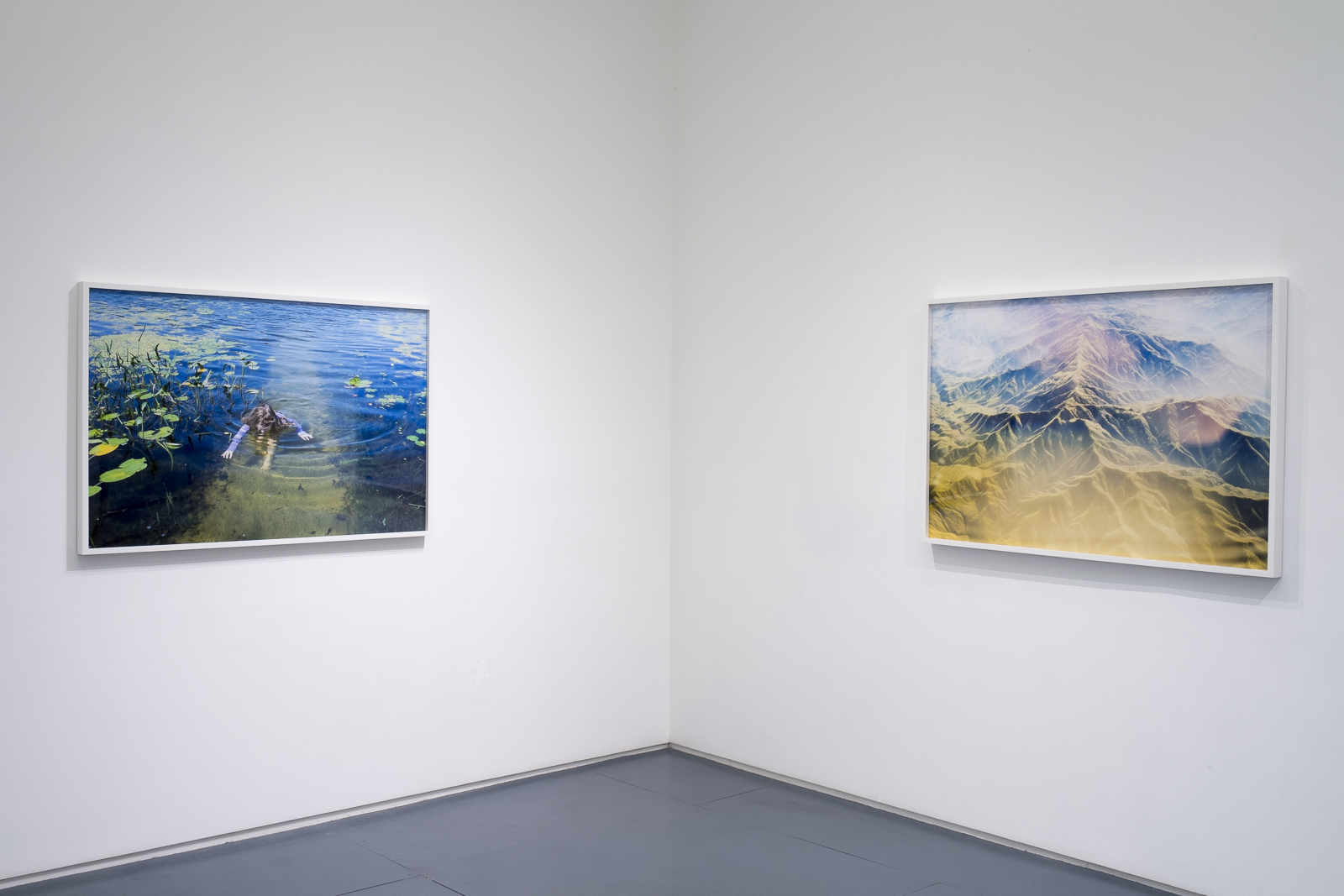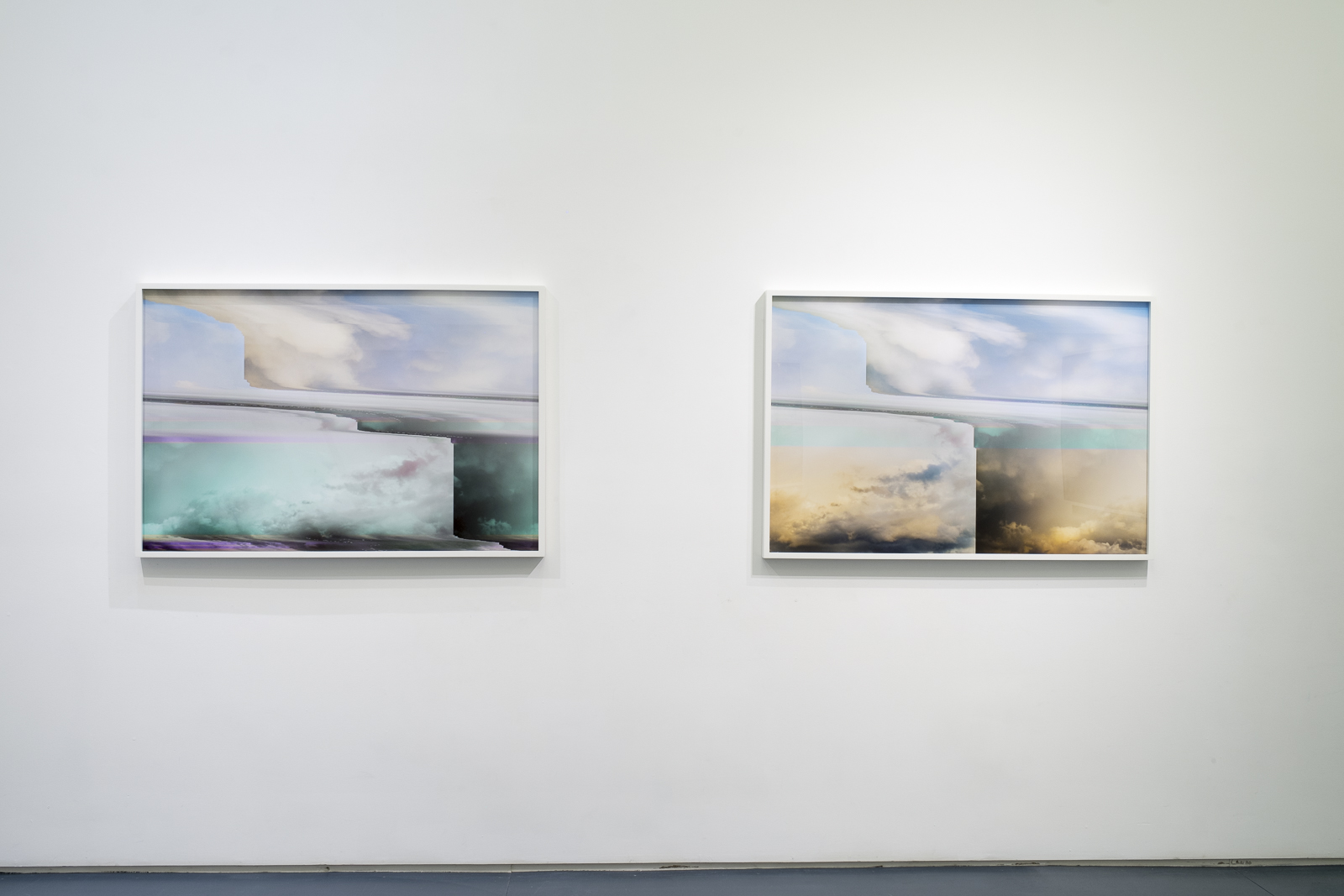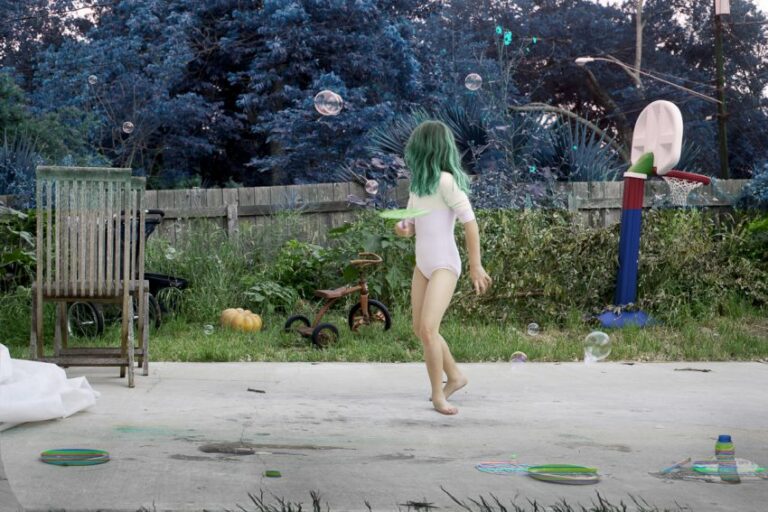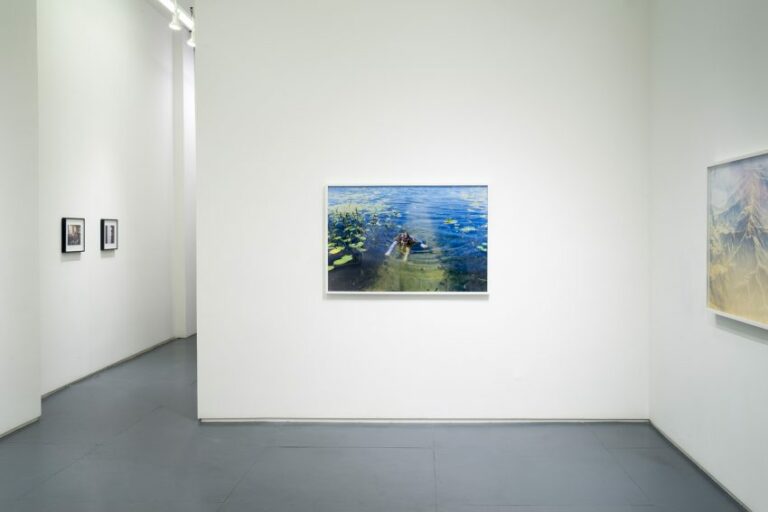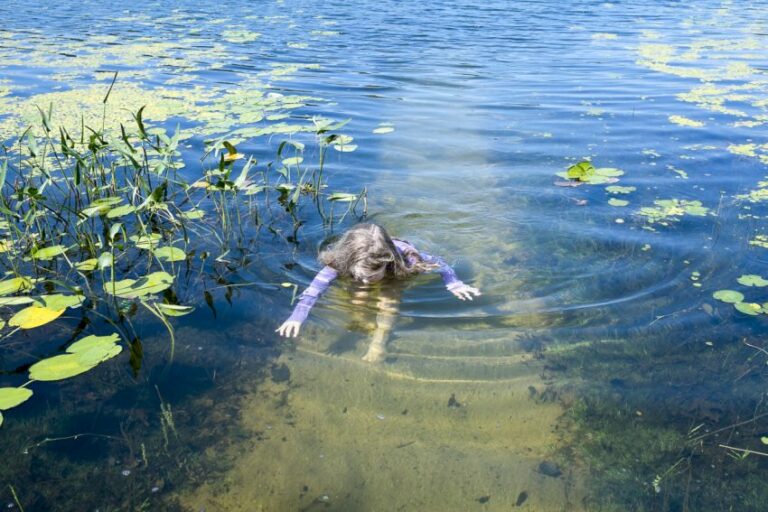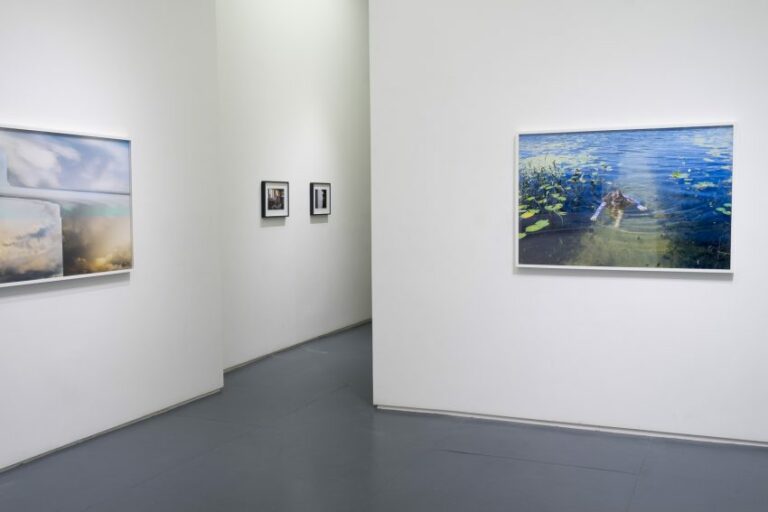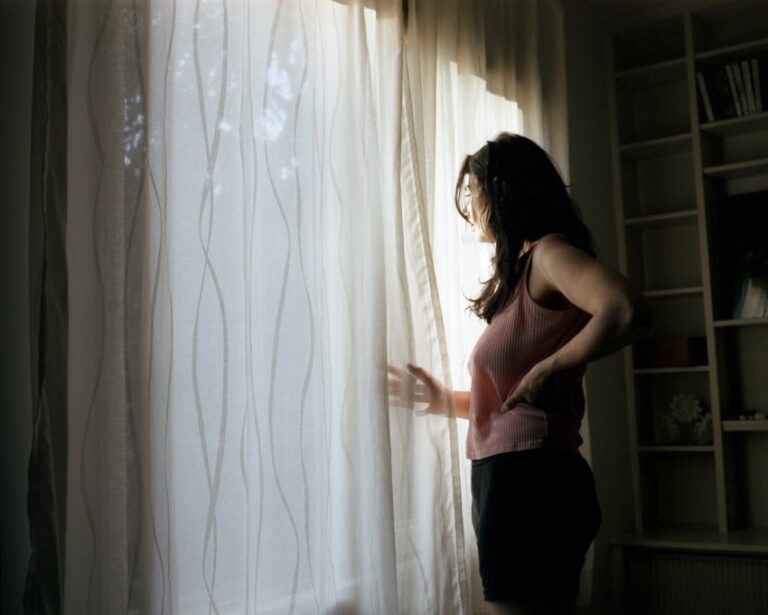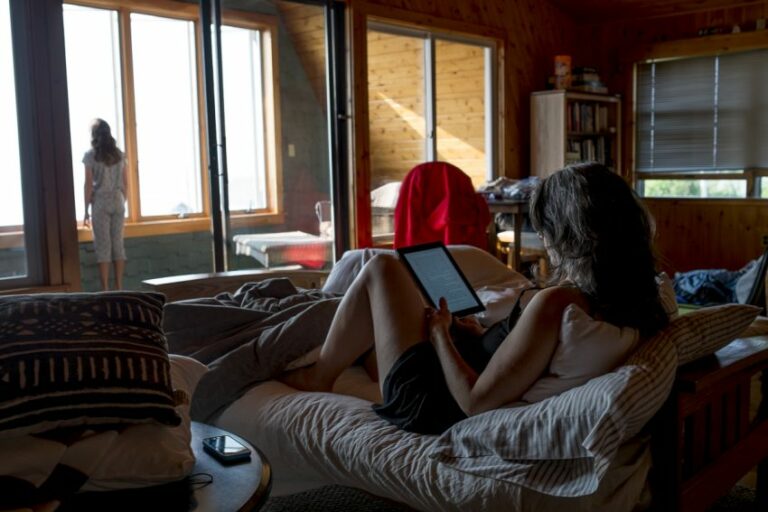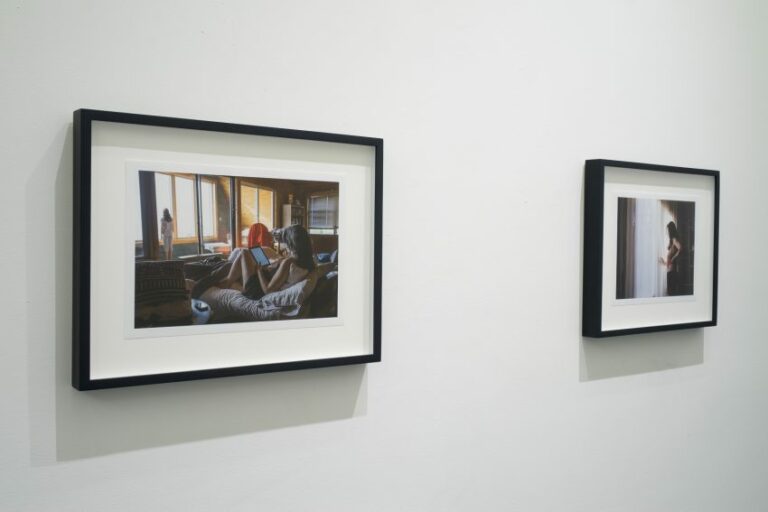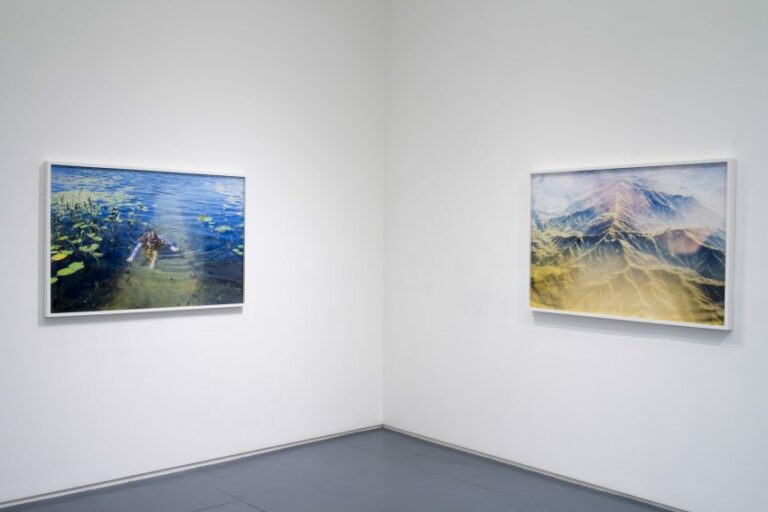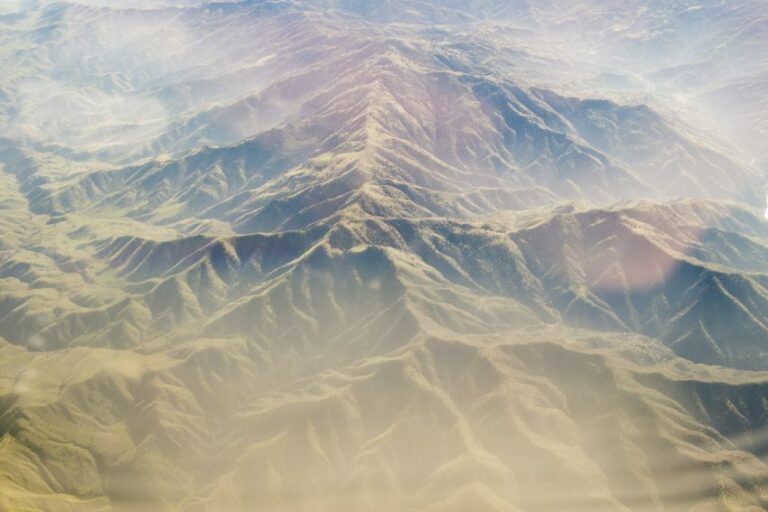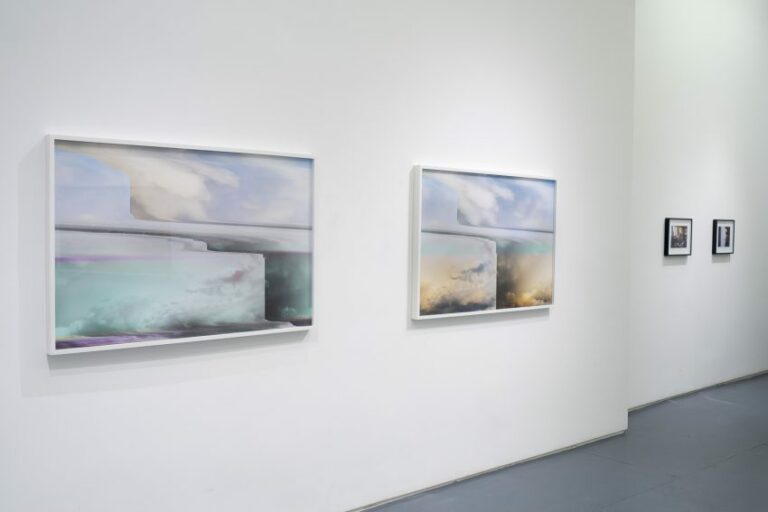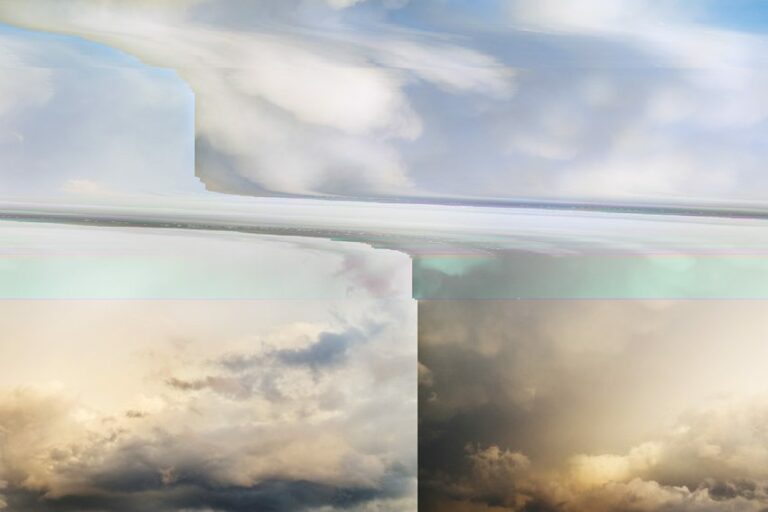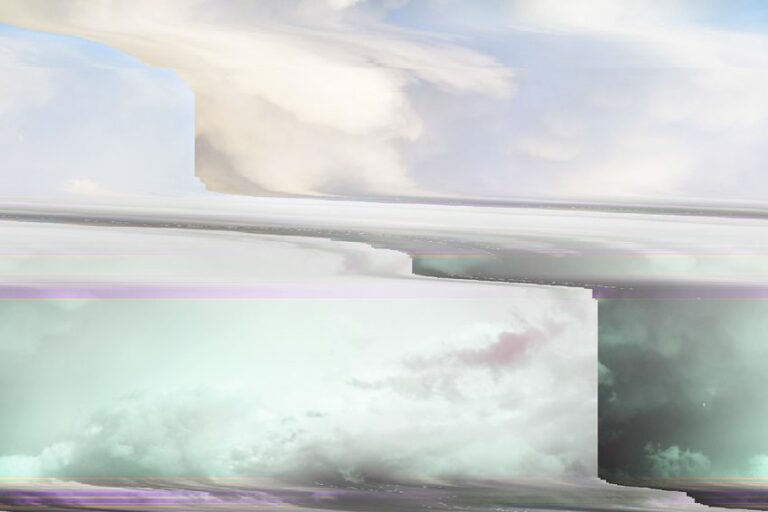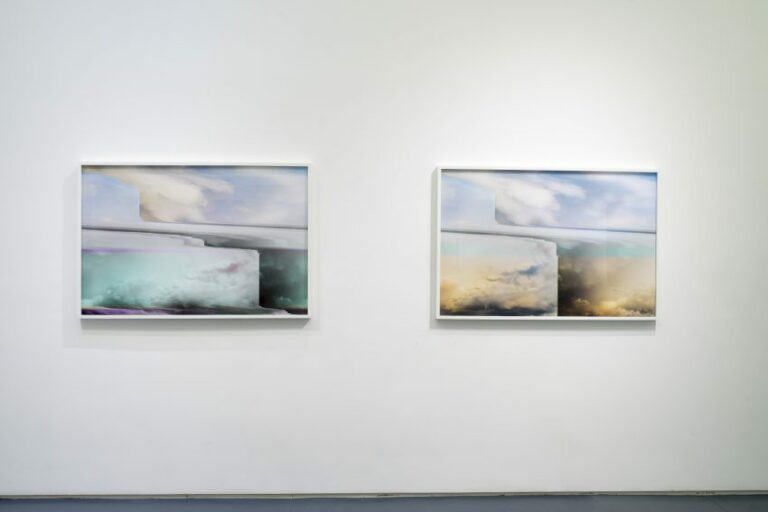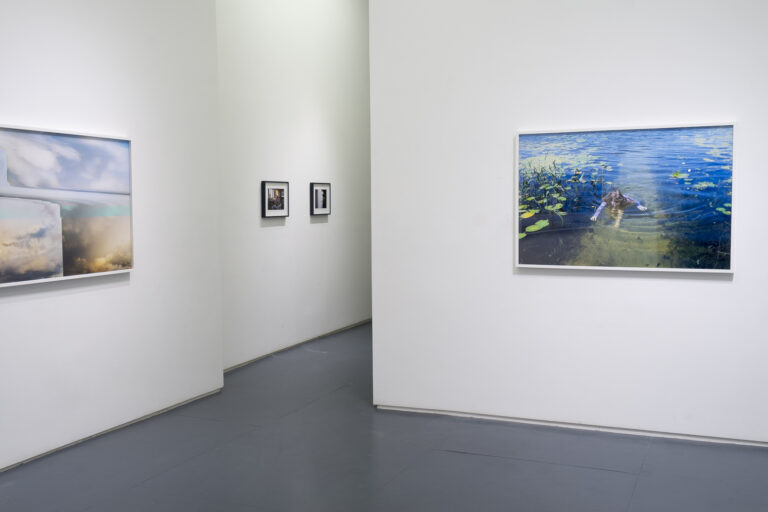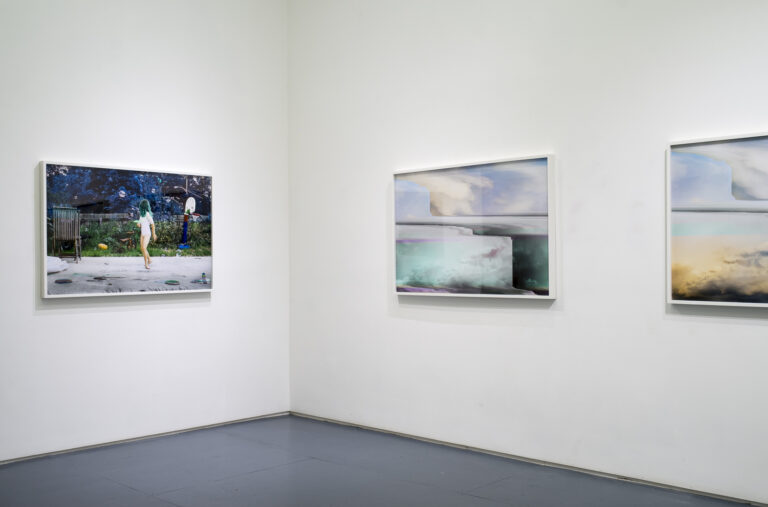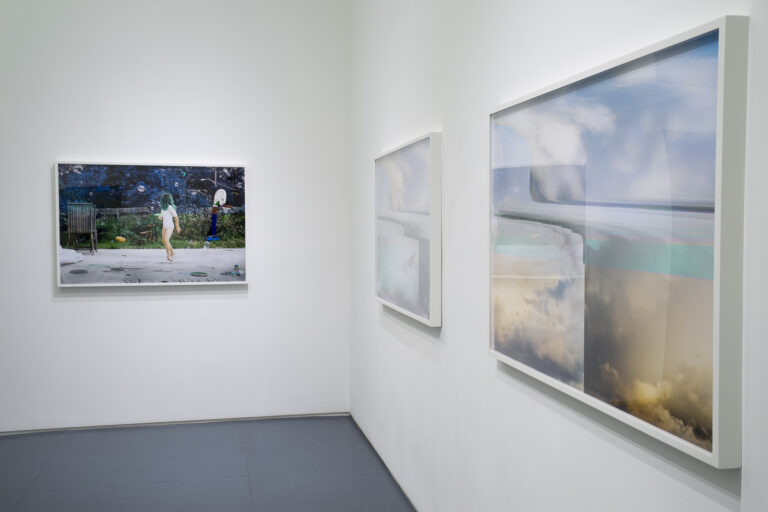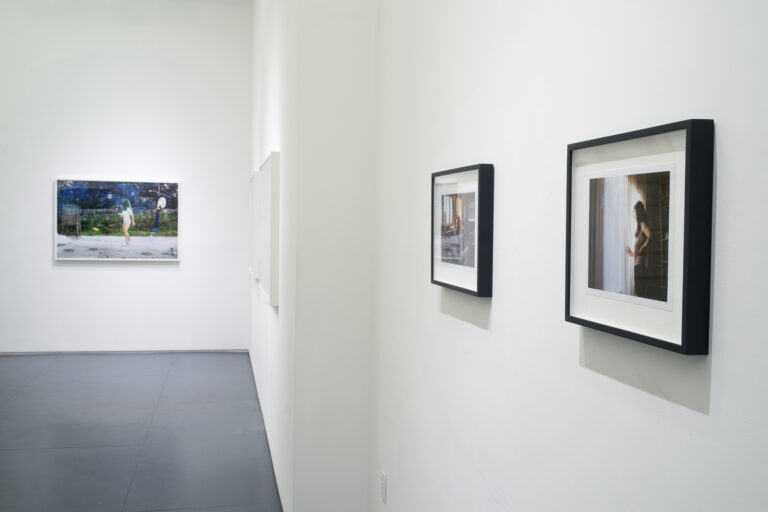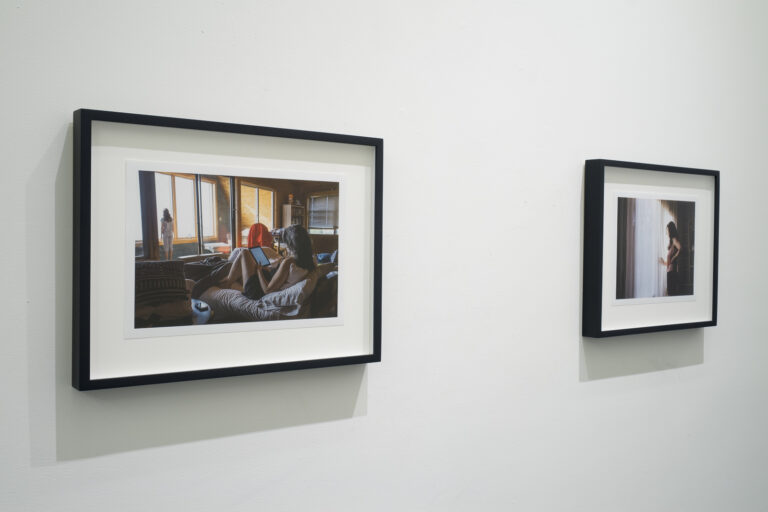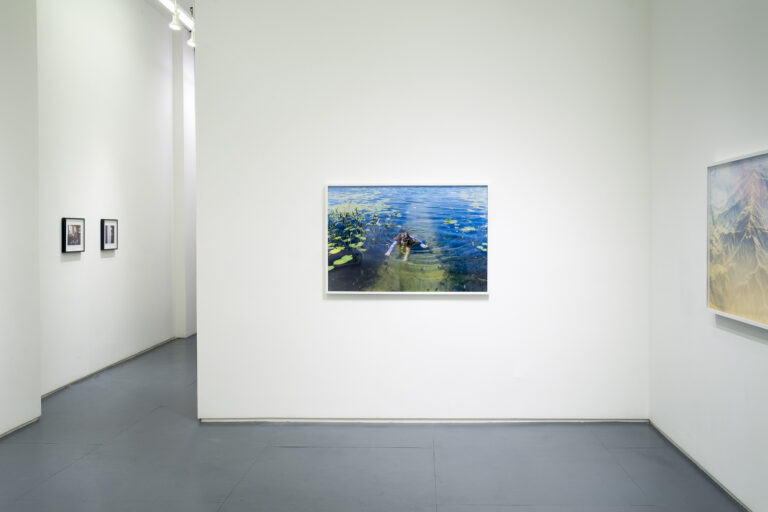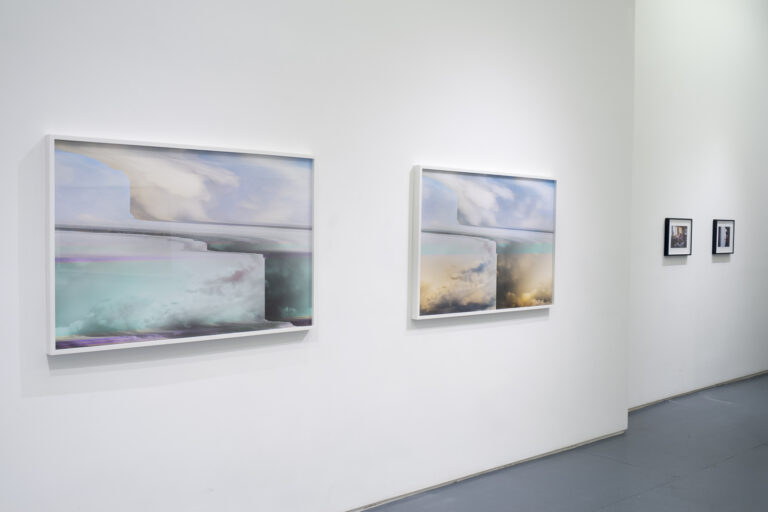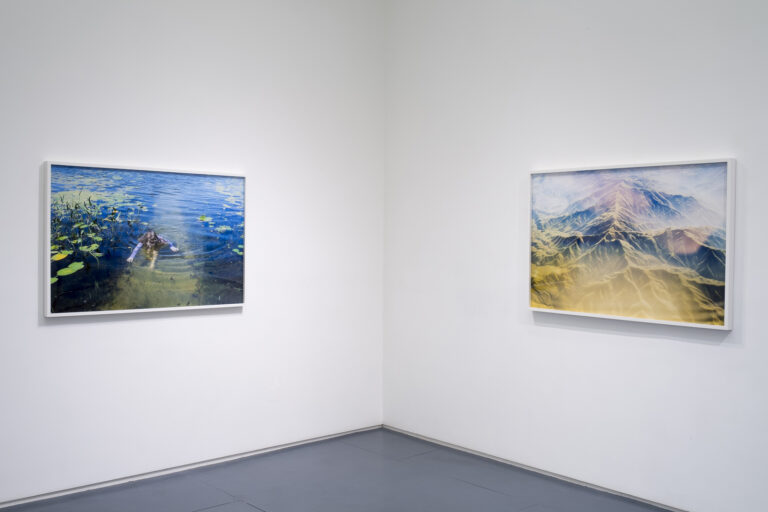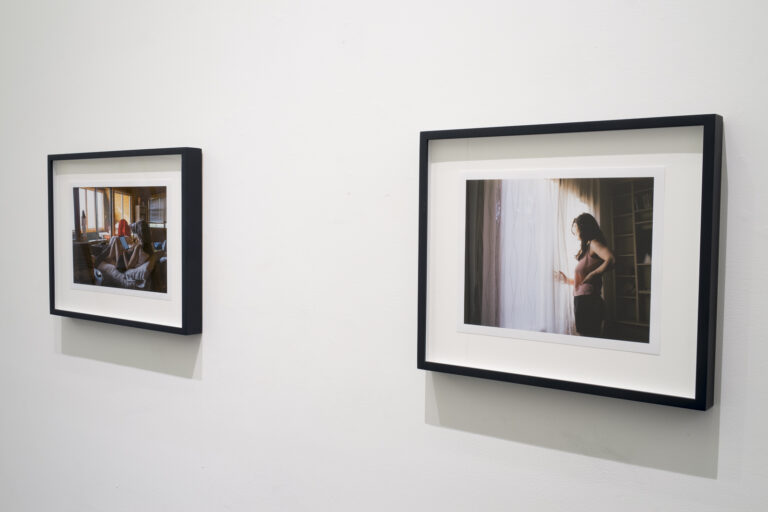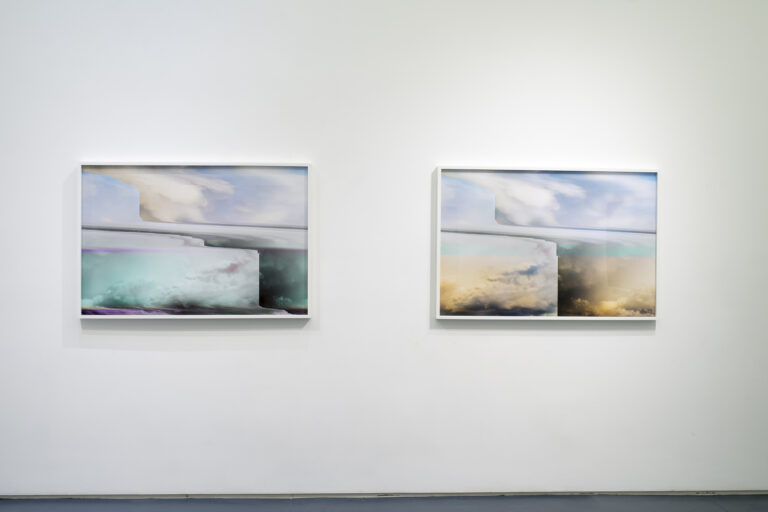What now is clear and plain is, that neither things to come nor past are. Nor is it properly said, “there be three times, past, present, and to come”: yet perchance it might be properly said, “there be three times; a present of things past, a present of things present, and a present of things future.” For these three do exist in some sort, in the soul, but otherwhere do I not see them; present of things past, memory; present of things present, sight; present of things future, expectation.
–The Confessions of Saint Augustine, Book XI, an autobiographical work between AD 397 and 400 Barry Stone’s new show at Klaus, The Future of Things Past, reflects on the personal and the existential as filtered through photography, looking toward the impulse to create one’s own history and to recast memories and perceptions. Several of Stone’s images have been “databent,” a process in which the artist hacks into and manipulates the programming code of the photos, causing unpredictable glitches, while others remain “straight” photography.Two photographs installed near the entrance of the gallery act as a framing device for the show. The first, previously exhibited at Stone’s first show with the gallery over a decade ago, depicts his wife, Ann, peering out a window, pregnant with their daughter. In the second, taken in 2015, Ann reclines with an e-reader in hand, while the same daughter, now 10, stands in the background with her back to us, her position facing a window echoing that of her mother in the earlier photo. Stone bridges the time that has lapsed between the images through his use of photography, creating a relationship through two moments, past and present, and sealing memory in the images.Stone extends the relationship between time and image into a wider array of subjects. Two larger works feature his daughters, each seemingly caught in suspended animation. One of the girls is partially submerged in a lake, evoking Ophelia, while another stands in the family backyard, frozen as she faces away from the viewer, emitting bubbles from a wand in her hand. In another large photo, Stone looks toward a much longer, geological time, depicting a mountain landscape shot from a plane flying above. In two others, the same photograph of clouds are glitched in two different versions, rendering the imagery even more ephemeral through the databending process.The Future of Things Past is an exploratory memoir of chance operations. Stones’ two realms of experience and image making inform and distort one another, using photography to cast and recast photography perceptions of how the present came to be and pondering what form the future may take.
–The Confessions of Saint Augustine, Book XI, an autobiographical work between AD 397 and 400 Barry Stone’s new show at Klaus, The Future of Things Past, reflects on the personal and the existential as filtered through photography, looking toward the impulse to create one’s own history and to recast memories and perceptions. Several of Stone’s images have been “databent,” a process in which the artist hacks into and manipulates the programming code of the photos, causing unpredictable glitches, while others remain “straight” photography.Two photographs installed near the entrance of the gallery act as a framing device for the show. The first, previously exhibited at Stone’s first show with the gallery over a decade ago, depicts his wife, Ann, peering out a window, pregnant with their daughter. In the second, taken in 2015, Ann reclines with an e-reader in hand, while the same daughter, now 10, stands in the background with her back to us, her position facing a window echoing that of her mother in the earlier photo. Stone bridges the time that has lapsed between the images through his use of photography, creating a relationship through two moments, past and present, and sealing memory in the images.Stone extends the relationship between time and image into a wider array of subjects. Two larger works feature his daughters, each seemingly caught in suspended animation. One of the girls is partially submerged in a lake, evoking Ophelia, while another stands in the family backyard, frozen as she faces away from the viewer, emitting bubbles from a wand in her hand. In another large photo, Stone looks toward a much longer, geological time, depicting a mountain landscape shot from a plane flying above. In two others, the same photograph of clouds are glitched in two different versions, rendering the imagery even more ephemeral through the databending process.The Future of Things Past is an exploratory memoir of chance operations. Stones’ two realms of experience and image making inform and distort one another, using photography to cast and recast photography perceptions of how the present came to be and pondering what form the future may take.
